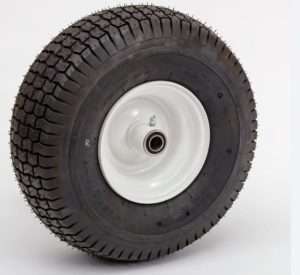What Is a Bolt-In Valve Stem? A Comprehensive Guide
If you’re a car owner, you’re probably aware of how important tire maintenance is. Tires are an essential component of your vehicle, and their condition can significantly affect your driving experience.
One of the things you need to keep an eye on is the valve stem, a small but vital part that connects the tire to the wheel. In this article, we’ll take a closer look at a specific type of valve stem: the bolt-in valve stem.
What is a Bolt-In Valve Stem?
A bolt-in valve stem is a valve stem that is attached to the wheel by a bolt instead of a rubber grommet. Unlike the more common rubber valve stems, bolt-in valve stems are made of metal and have a more robust construction.
They are typically used in high-performance applications, such as racing or off-roading, where the tires are subjected to higher loads and pressures than usual.
Advantages of Bolt-In Valve Stems
There are several advantages to using bolt-in valve stems over traditional rubber ones. Let’s take a look at some of them.
1. Increased Durability
The metal construction of bolt-in valve stems makes them much more durable than rubber valve stems. They can withstand higher pressures and loads, making them ideal for high-performance applications.
2. Better Sealing
Rubber valve stems rely on a rubber grommet to seal the valve to the wheel. Over time, the rubber can deteriorate and crack, leading to leaks. Bolt-in valve stems, on the other hand, use a metal-to-metal seal that is much more reliable and long-lasting.
3. Easier to Install
Bolt-in valve stems are easier to install than rubber valve stems. They require a specific tool to install, but once you have that, the installation process is straightforward.
4. More Secure
Since bolt-in valve stems are attached to the wheel with a bolt, they are much more secure than rubber valve stems. This added security can be essential in high-performance applications where the tires are subjected to extreme forces.
Disadvantages of Bolt-In Valve Stems
While there are several advantages to using bolt-in valve stems, there are also some disadvantages. Let’s take a look at them.
1. More Expensive
Bolt-in valve stems are more expensive than rubber valve stems. They require a more complex construction and are typically made of higher-quality materials.
2. Special Tool Required
As mentioned earlier, bolt-in valve stems require a specific tool for installation. This tool can be expensive and may not be readily available.
3. Limited Availability
Bolt-in valve stems are not as common as rubber valve stems. They are typically only used in high-performance applications and may not be readily available at your local tire shop.
Conclusion
Bolt-in valve stems are an excellent option for high-performance applications where the tires are subjected to extreme forces. They offer several advantages over the more traditional rubber valve stems, including increased durability, better sealing, and added security.
While they are more expensive and require a special tool for installation, the benefits they offer make them an attractive option for many car enthusiasts.
Frequently Asked Questions
- Can I install bolt-in valve stems myself? Yes, you can install bolt-in valve stems yourself, but you’ll need a specific tool to do so. If you’re not confident in your ability to install them correctly, it’s best to have a professional do it for you.
- Do I need to replace my rubber valve stems with bolt-in valve stems? No, you don’t need to replace your rubber valve stems with bolt-in valve stems unless you’re using your vehicle for high-performance applications. Rubber valve stems are perfectly adequate for regular driving conditions.
- What kind of vehicles use bolt-in valve stems? Bolt-in valve stems are typically used in high-performance vehicles such as race cars, off-road vehicles, and sports cars.
- Do bolt-in valve stems require special maintenance? Bolt-in valve stems don’t require any special maintenance. However, it’s essential to check them periodically to ensure they are properly tightened and not damaged.
- Are there any safety concerns with using bolt-in valve stems? As with any vehicle component, it’s essential to ensure that bolt-in valve stems are installed correctly and maintained properly. If they are not installed correctly or are damaged, they can lead to tire failure, which can be dangerous.



